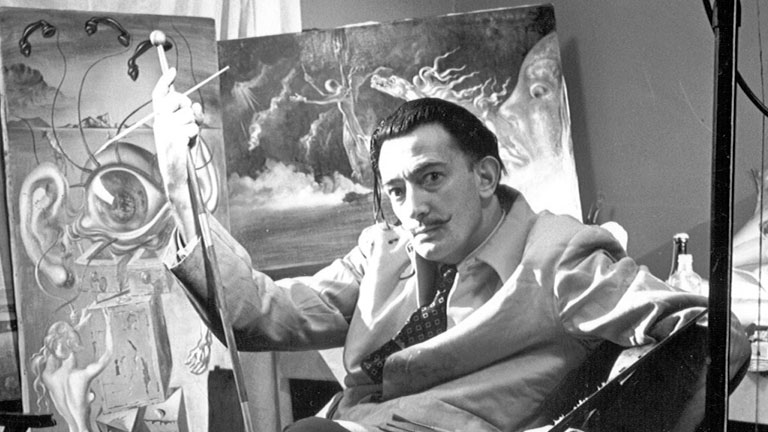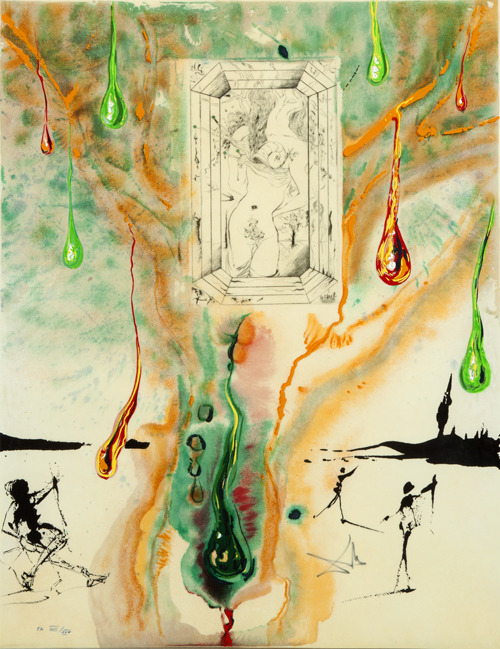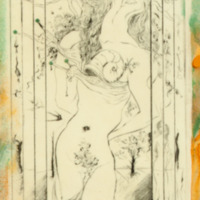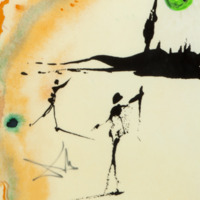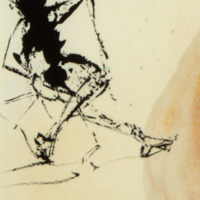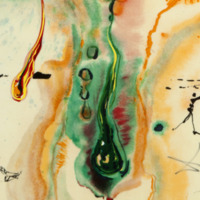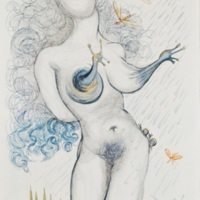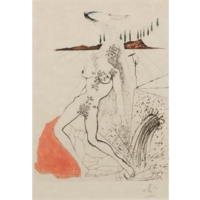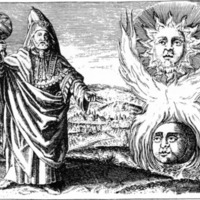The Emerald Tablet
The Emerald Tablet, or the Tabula Smaragdina, is a legendary ancient text attributed to the mysterious Hermes Trismegistus. Originally written in Arabic, it was first translated to Latin. It was then translated further by several alchemists and scholars, including Sir Isaac Newton, who also wrote a commentary on the text. Throughout the ages, the Emerald Tablet remained a primary text for alchemists. One of the most famous phrases from alchemy is taken from the Emerald Tablet. "As above, so below" is one of the variations of its translation.
Dalí references the Emerald Tablet with the black-and-white emerald-cut jewel on the top of the print. Inside the jewel is a nude female figure with snails emerging from her armpits and morphing into her breasts. The snails have semiprecious jewels, likely jade, afixed to the print as their eyes. Instead of a human head, a tree sprouts from the woman's shoulders, with branches extending into the facets of the jewel. The rest of the print outside the jewel is vibrantly colored in oranges and greens, with large drops of color traveling down the print. The drops are references to dew, which alchemists considered to be the celestial water. The largest dew drop is centered below the jewel and mimics the curves of the tree-headed woman's body. This mirrored shape could be a reference to the alchemical motto "As above, so below" found in the Emerald Tablet. In the background is another plane: silhouetted travelers with walking sticks approaching a landscape of cypress trees. The travelers are pilgrims, a symbol of the alchemist in search of the Philosopher's Stone. The pilgrims' walking sticks are significant because the walking stick is the attribute of St. James, considered the patron saint of alchemists. The pilgrims may also reference Hermes/Mercury, the primary figure associated with alchemy, because he is frequently represented as a traveler.
Excerpt from the alchemical texts in Alchimie des Philosophes:
"True it is, lacking deception, certain and most real, that what is below is like that which is above, and what is above is like that which is below, to accomplish the miracles of one thing." -The Emerald Tablet
